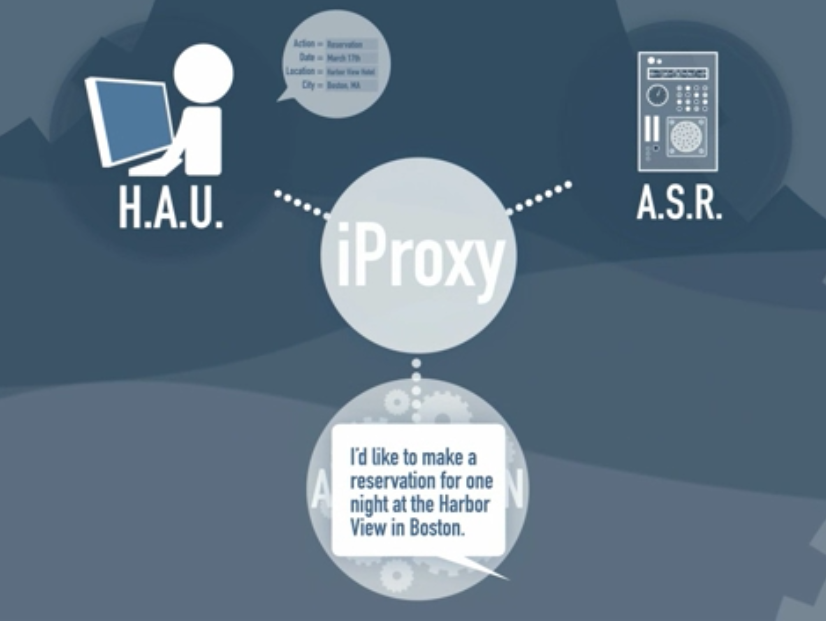Call it Revenge of the Humans. With mounting hype about AI, bots and all things automated, I was delighted to recently learn that humans can actually make automation work better, improving the customer experience while saving money.
Next time you call Hyatt to reserve a room in the U.S., you could be interacting with a truly intelligent IVR. No, not that touch-tone thing most consumers hate because, all too often, they need to zero out to talk to an agent who can understand a fellow human.
During that Hyatt reservations call, a natural language-based voice IVR collects information about your desired hotel stay. That’s already an improvement over IVR menu trees. But, what you won’t know is that behind the scenes, a team of human operators help fill in the gaps where the voice recognition can’t make sense of the responses. In real-time.
With basic details collected, now the call can be transferred to an agent to help complete the booking with a human touch. In my view, this process is a great collaboration of man and machine, showing that even with advanced voice recognition systems, humans are still much better at understanding other humans.
“Meaningful Contacts” at Hyatt Customer Service
While roughly nine out of ten executives say they care about the customer experience, I say “show me the money.” How a company invests its resources says a lot about how customers really factor into the business strategy.
Hyatt’s investments shows it really cares about customer satisfaction. Chris Hale, VP Reservation Services at Hyatt, manages a massive operation of contact centers around the world, handling global reservations and customer care. Centers are located regionally because — as the outsourcing industry learned the hard way — just speaking the customer’s language is not enough. Hale says it’s “critical to be culturally sensitive,” explaining their decision to locate a call center in Tokyo, which most certainly isn’t the lowest cost option.
The Hyatt customer experience (CX) strategy goes further, says Hale. The goal is to create “meaningful contacts” that help customers get things done quickly and easily. If a call is needed to fix a problem, Hyatt figures out the root cause to fix it and eliminate the need for that call in the future. That saves money, cuts customer frustration, and frees up more time to help customers book the right hotel stay.
The reservations scenario discussed initially is supported by Interactions (more on that in a moment), a relationship that started some seven years ago. Hale was searching for a more conversational approach that would use technology to help provide information needed for productive calls with live agents.
Notably, the Interactions-based approach didn’t change buying patterns, according to Hale. By ramping slowly with a test-and-learn approach, Hyatt was eventually able to save 6-7% FTE while improving ease of use and NPS. Employees took some time to adjust to the new system, but now engagement scores are a bit higher.
Humanizing Automation
Interactions was founded in 2004, and in 2008 went through what CEO Mike Iacobucci described as a “rebirth” when they launched a way to “use humans in real-time as a recognition resource.” Say what?
Let me unpack that for you. With all the advances in speech recognition and “voice IVR” systems based on natural language recognition, the dirty little secret is that a significant percentage of calls can’t be fully handled by technology. In aggregate, Iacobucci says about 30% of calls need some help due to accents, poor audio quality, and other factors. These are the sorts of call, it must be noted, that are likely to lead to the customer ending up with the wrong outcome, or being transferred to an agent for help.
The solution was Adaptive Understanding™ technology that combines speech recognition with human intelligence.

Voice calls are processed with automated speech recognition (ASR) technology from the ATT Watson platform acquisition. When a call is determined to need help (low confidence level), an operator is immediately alerted and helps fill in the right words so the transaction can proceed. This all happens within a few seconds at most.
Iacobucci says people providing the “Human Assisted Understanding” (HAU) service operate “in almost a gaming job,” processing up to 8,000 utterances per shift. This synergistic approach improves the overall success rate to around 95%. With help from machine learning, the quality of speech recognition improves over time, too. Interactions now handles 700 million calls per year and billions of utterances for 40 customers.
Best of Both Worlds
I’ve been following and researching self-service for nearly 20 years. The promise of high success rates (“containment” in contact center parlance) is like a desert mirage you never reach. Not with web self-service, and certainly not with IVRs, despite huge advances in technology.
The recent hype about AI-driven bots is certainly exciting, but I wonder if the result will be the same. Only time will tell, and Hale admits that AI potential shouldn’t be ignored. Finding skilled labor is getting harder and customers are getting more accustomed to full automation for simple and repetitive transactions.
Still, when there’s an opportunity to add value to an interaction — to improve the experience or increase sales — automation shouldn’t get in the way. That’s the beauty of the Interactions approach: a way to dynamically get technology and people working together to optimize the customer experience on both cost and satisfaction. Impressive.




Real interesting approach – especially if combined with a machinelearning capability in the back end. All of the sudden the human can become a tutor to the machine